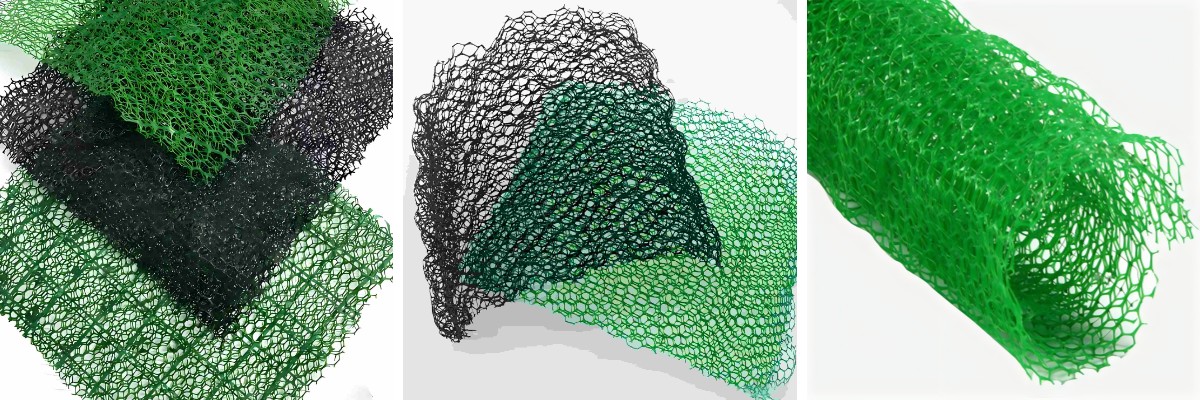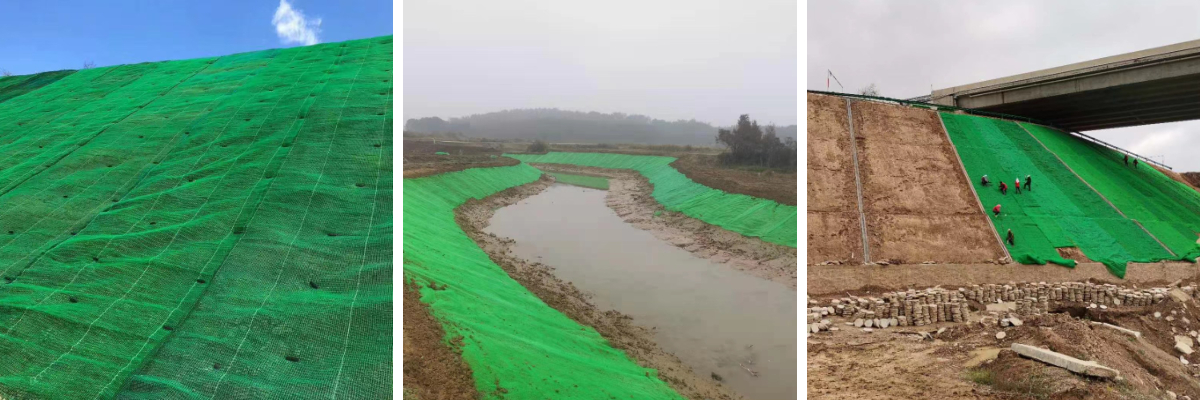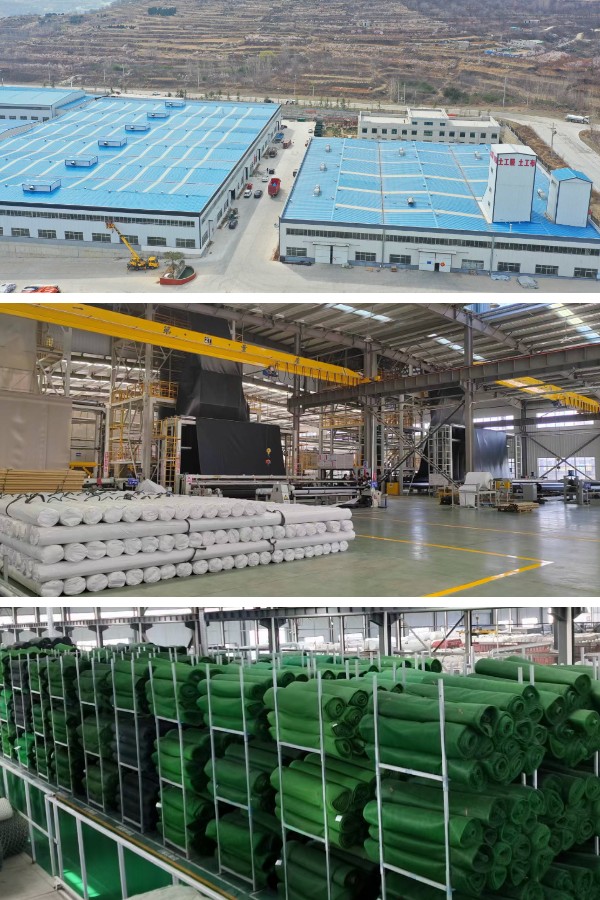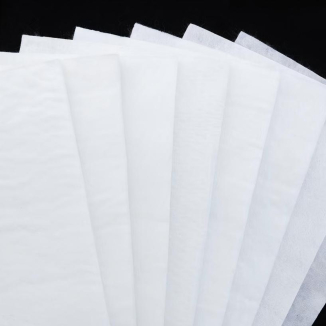3D Vegetation Net Specifications: What Contractors and Engineers Need to Know
In slope stabilization, erosion control, and ecological restoration projects, 3D vegetation nets have turn out to be indispensable. These specialised nets create a supportive framework for plant increase whilst reinforcing soil structure. For contractors and engineers, appreciation 3D vegetation internet specs is key to deciding on the proper product and making sure undertaking success. This information breaks down quintessential details, from dimensions to installation, to assist specialists make knowledgeable decisions.
Understanding 3D Vegetation Nets: A Quick Overview
3D vegetation nets are three-dimensional, porous constructions usually made from high-density polyethylene (HDPE) or polypropylene (PP). Unlike flat geotextiles, their raised, grid-like diagram traps soil particles, retains moisture, and gives a steady base for seeds to germinate and roots to anchor. This twin function—erosion manipulate and vegetation support—makes them best for susceptible areas like steep slopes, street embankments, and riverbanks.
To maximize their effectiveness, it’s crucial to align 3D vegetation internet specs with mission requirements. Factors like slope angle, soil type, and neighborhood local weather dictate which dimensions and fabric houses will operate best.
Core 3D Vegetation Net Specifications to Consider
Material and Durability
Most 3D vegetation nets are crafted from UV-stabilized HDPE or PP, making sure resistance to sunlight, chemicals, and organic degradation. This sturdiness is indispensable for long-term projects, as the internet have to continue to be intact till vegetation establishes (typically 1–2 developing seasons). Look for specs that verify UV resistance scores and tensile strength—minimum 20 kN/m is encouraged for steep slopes.
Dimensions of 3D Vegetation Net
The bodily measurement without delay affects insurance and performance:
Thickness: Ranges from 10mm to 50mm. Thicker nets (30–50mm) provide higher soil retention for slopes steeper than 30 degrees.
Width and Length: Standard rolls are 2–4 meters large and 50–100 meters long, balancing ease of transport with fewer seams at some stage in installation.
Mesh Size: Typically 20mm x 20mm to 50mm x 50mm. Smaller meshes (20–30mm) work properly for satisfactory soils, whilst large meshes go well with coarse substrates.
These Dimensions of 3D Vegetation Net make certain the internet can adapt to terrain whilst offering ample house for root growth.
Porosity and Water Permeability
3D vegetation internet specs need to encompass porosity (typically 60–80%), permitting water, air, and vitamins to attain seeds and soil. High permeability prevents waterlogging, which can wash away seeds or drown younger plants. For wet regions, prioritize nets with porosity above 70% to keep away from runoff buildup.
How to Install 3D Vegetation Net: Key Steps
Proper set up is as crucial as selecting the proper specifications. Here’s a step-by-step overview of how to set up 3D vegetation net:
Site Preparation: Clear debris, rocks, and weeds from the slope. Smooth uneven areas to make certain the internet lies flat.
Unrolling and Positioning: Lay the internet roll parallel to the slope’s contour. Overlap adjoining rolls by using 15–20cm to stop gaps.
Securing the Net: Use U-shaped stakes (15–30cm long) to anchor the net, setting stakes each 50–100cm alongside edges and seams. For slopes over 25 degrees, add more stakes in the core of every mesh cell.
Soil and Seed Application: Spread a 2–5cm layer of topsoil or increase medium over the net, then broadcast seeds proper to the nearby climate. Lightly water to settle the soil.
Following these steps ensures the internet stays in location and helps vegetation boom effectively.
Ideal Applications for 3D Vegetation Nets
Road and Railway Embankments
Steep slopes alongside roads and railways are inclined to erosion. 3D vegetation nets with 30–40mm thickness and 20mm x 20mm mesh stabilize soil, lowering the threat of landslides that ought to disrupt transportation.
River and Coastal Banks
In water-adjacent areas, nets with excessive UV resistance and 40–50mm thickness defend in opposition to wave erosion. Their porous sketch permits water float whilst trapping sediment to construct up banks over time.
Mining and Construction Sites
Post-construction or mining web sites frequently have naked soil. 3D vegetation nets pace up revegetation, stopping sediment runoff into close by waterways. Opt for large mesh sizes (40–50mm) to accommodate faster-growing pioneer plants.
Why Choosing the Right Specifications Matters
Mismatched 3D vegetation internet specs can lead to task failure. For example, the usage of a skinny internet (under 20mm) on a steep slope may additionally end result in soil slippage, whilst a low-porosity internet in a wet place can reason seed loss. By aligning dimensions, material, and permeability with website online conditions, contractors make certain the internet helps vegetation institution and long-term erosion control.
Conclusion
3D vegetation nets are effective equipment for erosion manage and ecological restoration, however their success hinges on grasp 3D vegetation internet specifications. From Dimensions of 3D Vegetation Net (thickness, width, mesh size) to cloth sturdiness and permeability, every element affects performance. By choosing the proper specs and following ideal installation steps (how to deploy 3D vegetation net), contractors and engineers can create stable, inexperienced slopes that stand the take a look at of time. Whether for roads, rivers, or building sites, investing in the right 3D vegetation internet ensures tasks meet environmental requirements and supply lasting results.
Contact Us
Company Name: Shandong Chuangwei New Materials Co., LTD
Contact Person :Jaden Sylvan
Contact Number :+86 19305485668
WhatsApp:+86 19305485668
Enterprise Email: cggeosynthetics@gmail.com
Enterprise Address: Entrepreneurship Park, Dayue District, Tai 'an City,
Shandong Province









